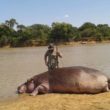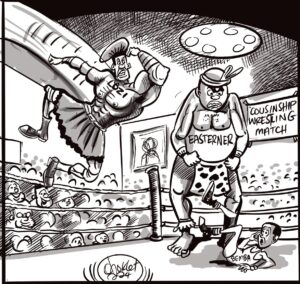Ministry of Tourism Permanent Secretary Rev Howard Sikwela has announced that the hippo culling exercise in the Luangwa Valley of Eastern Province will commence in May at the start of the hunting season.
Tourism and Arts Public Relations Officer Sakabilo Kalembwe said in a statement that Rev Sikwela disclosed this, Wednesday, when he met representatives from various Community Resource Boards (CRBs) across the country.
Sakabilo stated that Rev Sikwela informed the meeting that the hippo culling exercise would be preceded by sensitization of the communities and stakeholders involved in the process in order for all to appreciate the benefits of the massive undertaking.
Rev Sikwela said those in Eastern Province, where the activity would conducted from, shall be given an opportunity to contribute and ask questions where they were not sure concerning the culling activity.
The PS expressed happiness that a lot of people already had an appreciation of the background and benefits of the culling activity.
Earlier in Rev Sikwela’s meeting, National CRBs association coordinator Isaac Banda wondered if the hunting story was a rumour or a confirmed position by the Ministry.
Banda said he was concerned that local communities in areas where the culling activity would take place had not been fully engaged to appreciate the benefits of such an undertaking.
He said the communities were equal partners with government in the conservation process and hence the need to constantly be kept in the know of what was happening in their surroundings.
Hippo culling in the Luangwa Valley is a measure necessitated to keep in check the over-population of the wild animals.
The function is usually sanctioned by the Zambian Department of National Parks and Wildlife (DNPW) as a ‘wildlife management tool’ to also prevent any possible spread of anthrax among wild animals along a 250Km stretch of riverine forest between Chikwa in North Luangwa and Lusangazi in South Luangwa.
But the US AMbassador to Zambia Daniel Foote has objected to the move, arguing that there was no scientific research to prove that the animals were overpopulated and causing harm to humans in the valley.











